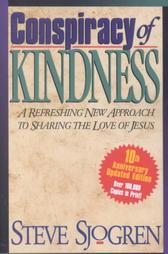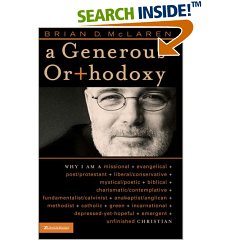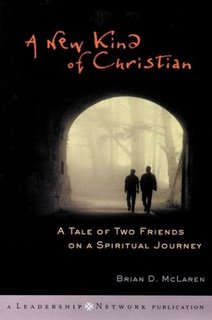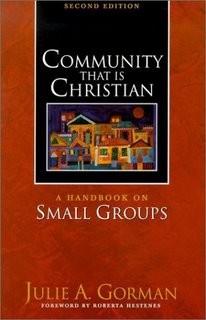Organic Community
Joseph Myers does not waste time or words in his short but powerful guide to creating “organic order.” The book is built on a contrast between creating a master plan for community and working at being a community environmentalist. This lends itself easily to his structure of taking a catch-word for master planning and replacing it with a environmental approach. The nine organizational tools he chooses (patterns, participation, measurement, growth, power coordination, partners, language and resources) will hit home with any church system. The book is a response to all the leaders who found themselves deeply moved by “A search to Belong,” but needed more explanation on how the four spaces really effect an organization and leadership.
Observations
Myers brilliance and audacity are immediately apparent in his ability to get Randy Frazee and Bill Donahue (the fathers of community master planning) to write forewords to a book that deconstructs their models of ministry. In the “The search to Belong” Myers has a posture of anecdotal humility concerning his discoveries. And though Organic Community is a response to the “what now question” Myers seems more confident and speaks from practical experience. Though I like the title and the language of the book it seems fairly trendy to be talking about something being organic and leaders becoming environmentalists.
Believe
Each organization tool elicited it own emotion from me as a reader and church leader. When I read about moving from prescriptive patterns to descriptive patterns I felt like saying “yes” and copying the chapter of for my leadership team. After reading his chapter on participation as moving from representative to individual I felt a need to repent and ask several peoples forgiveness. He talks about how no one wants to simply fit in our well-designed plans, or be a token participant. I am sorry to all those people who have been asked to do something they had no gifting, desire or ability to do. The chapters on measurement and growth are great, but the next chapter that really stirred my spirit was on power. I have been reacting to positional power for years, but realized while reading this chapter I had been advocating flat power verse what Myers calls “revolving” power. Flat power sharing would look like a flock of geese flying in a straight line. What we really need is a revolving system of power where the person who can take the project forward at that moment has the permission to step up. When I read about coordination and partners I was frustrated by what Myers had to say. I think he was right in both cases and now I have to change my approach.
Doubt
I think the kind of organic order Myers describes can be implemented into a system built by master planners. I think this is why Frazee and Donahue both liked the book. Even as Myers is reacting against master planning he advocates giving the “project” the power to avoid positional authority. What is a project if it is not a plan making an object or goal the end result of relationships. Myers provides what I might call the new leadership principles for environmentally savvy leaders. In the end it does not interact very much with the 4 spaces of belonging. He provides many great anecdotal examples from his own business, but provides few descriptive examples of what the system of organic order would look like in a church.
Assess
This is a valuable resource book for leaders who desire more natural belonging in their current community structure. Each organizational tool can be tested, applied and discussed in the community individually. Myers greatest strength is his ability to infect changed without proposing another prescriptive model of community.
Labels: Organic Community







